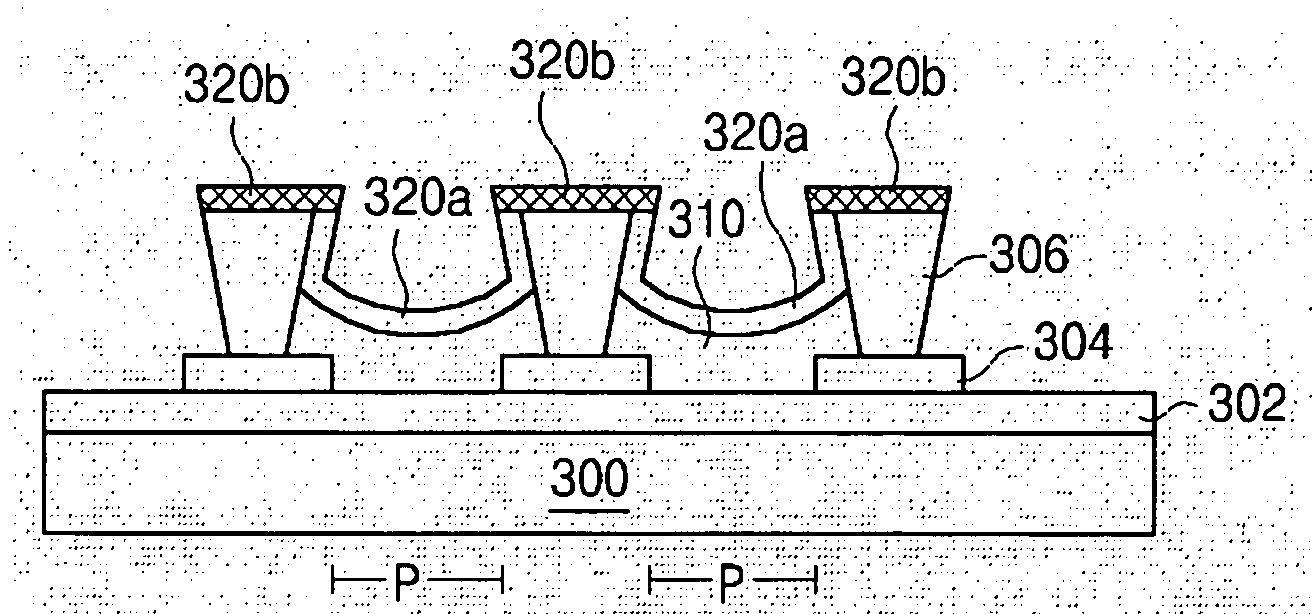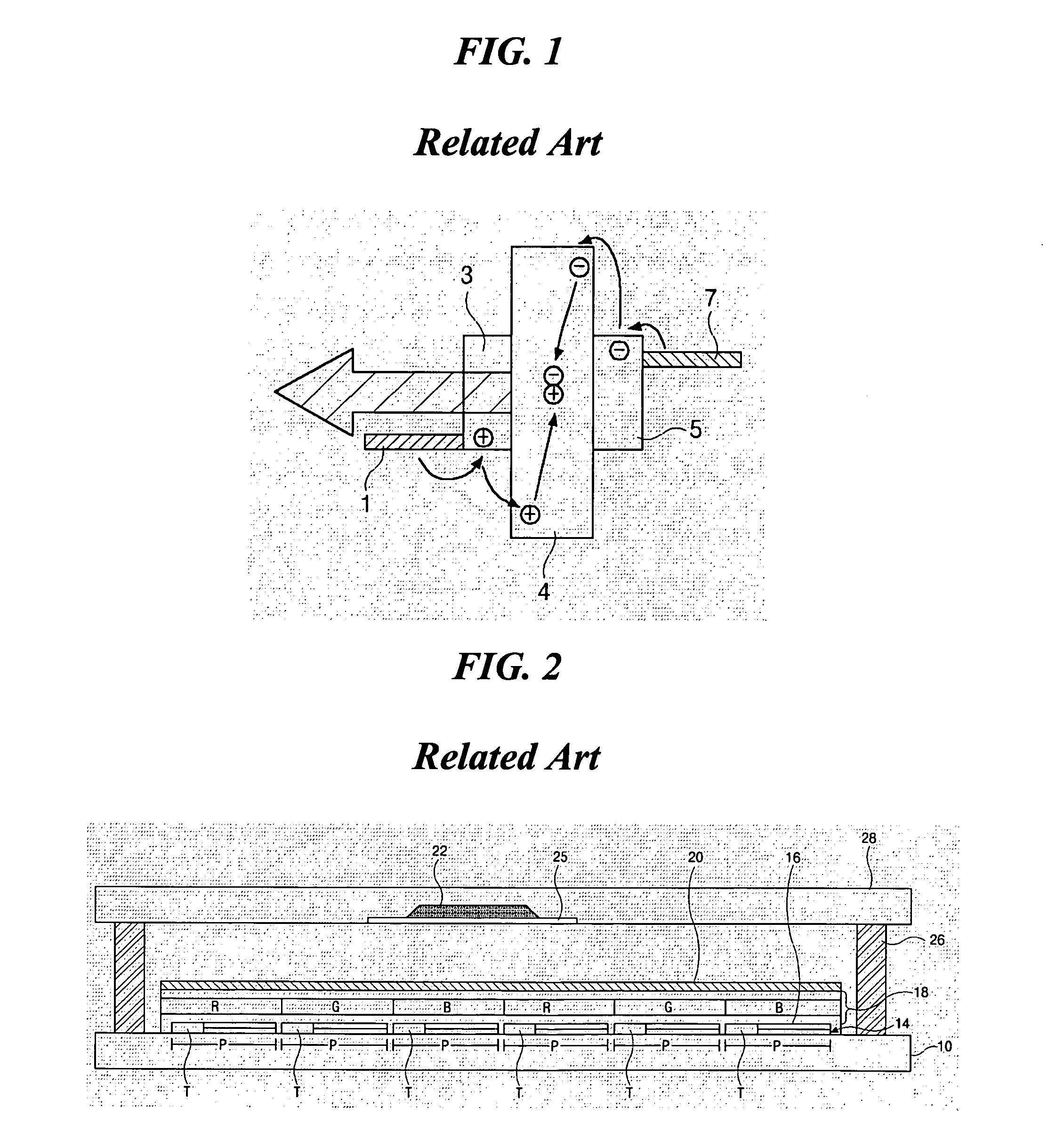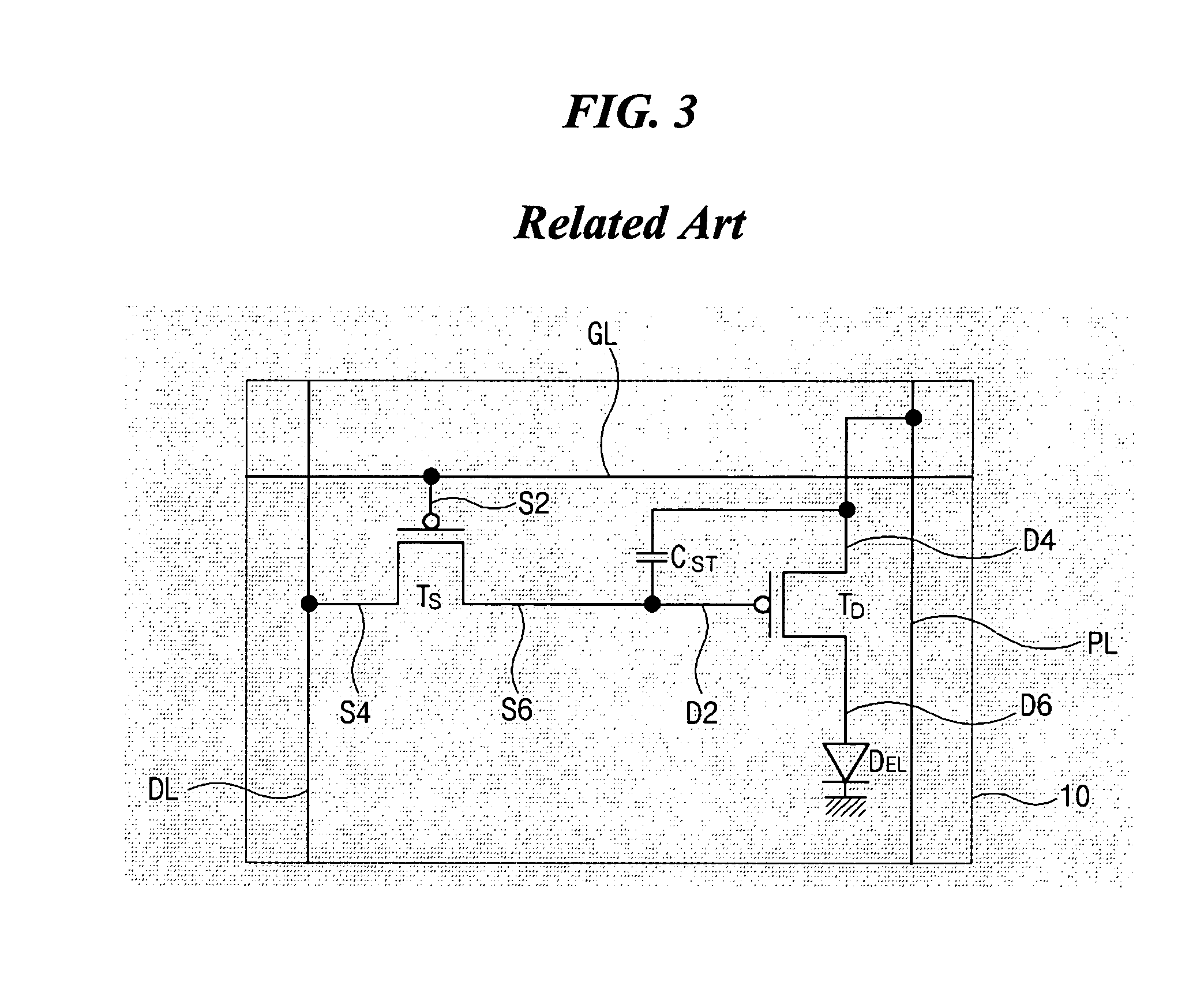Organic electroluminescent device and fabricating method thereof
a technology of electroluminescent devices and organic materials, applied in the manufacture of electrode systems, electric discharge tubes/lamps, electrode systems, etc., can solve the problems of increasing production costs, reducing the display size of passive matrix organic eld, and requiring a relatively high amount of power to operate, etc., to achieve the effect of simplifying the manufacturing process
- Summary
- Abstract
- Description
- Claims
- Application Information
AI Technical Summary
Benefits of technology
Problems solved by technology
Method used
Image
Examples
first embodiment
[0052]FIGS. 6A to 6E are schematic cross-sectional views illustrating a fabricating process according to present invention.
[0053]In FIG. 6A, pixel regions “P” is defined in a substrate 300. A first electrode 302 is formed on the substrate 300 including the pixel regions “P.” The first electrode 302 is made of a transparent conductive material such as tin oxide (ITO), indium zinc oxide (IZO), indium tin zinc oxide (ITZO), or the like. Then, an insulating layer 304 is formed on the first electrode 302 at boundaries of the pixel regions “P” to prevent shorting between the first electrode 302 and a second electrode that will be formed later. Although not shown in FIG. 6A, the insulating layer 304 may be formed as one body in a plan view. In addition, the insulating layer 304 may be formed by depositing and patterning silicon nitride (SiNx) or silicon oxide (SiO2), or by coating and patterning polyimide. For example, a process for patterning a polyimide layer may be a photolithography pr...
second embodiment
[0059]FIGS. 7A to 7G are schematic cross-sectional views illustrating a fabricating process according to present invention.
[0060]In FIG. 7A, pixel regions “P” is defined in a substrate 400. A first electrode 402 is formed on the substrate 400 including the pixel regions “P.” The first electrode 402 is made of a transparent conductive material such as tin oxide (ITO), indium zinc oxide (IZO) and indium tin zinc oxide (ITZO), or the like. Then, an insulating layer 404a is formed on the first electrode 402 at boundaries of the pixel regions “P” to prevent shorting between the first electrode 402 and second electrodes that will be formed later. Although not shown in FIG. 7A, the insulating layer 404a may be formed as one body in a plan view. In addition, the insulating layer 404a may be formed by depositing and patterning silicon nitride (SiNx) or silicon oxide (SiO2), or by coating and patterning polyimide. For example, the patterning step may include a photolithography process using a...
third embodiment
[0071]FIGS. 8A to 8E are schematic cross-sectional views illustrating a fabrication process according to present invention.
[0072]In FIG. 8A, pixel regions “P” is defined in a substrate 500. A first electrode 502 is formed on the substrate 500 including the pixel regions “P.” The first electrode 502 is made of a transparent conductive material such as indium tin oxide (ITO), indium zinc oxide (IZO), indium tin zinc oxide (ITZO), or the like. Then, an insulating layer 504 is formed on the first electrode 502 at boundaries of the pixel regions “P” to prevent shorting between the first electrode 502 and a second electrode that will be formed later. Although not shown in FIG. 8A, the insulating layer 504 may be formed as one body as observed in a plan view. In addition, the insulating layer 504 may be formed by depositing and patterning silicon nitride (SiNx) or silicon oxide (SiO2), or the insulating layer may be formed by coating and patterning polyimide. For example, a the patterning ...
PUM
| Property | Measurement | Unit |
|---|---|---|
| time | aaaaa | aaaaa |
| temperature | aaaaa | aaaaa |
| electroluminescent | aaaaa | aaaaa |
Abstract
Description
Claims
Application Information
 Login to View More
Login to View More - R&D
- Intellectual Property
- Life Sciences
- Materials
- Tech Scout
- Unparalleled Data Quality
- Higher Quality Content
- 60% Fewer Hallucinations
Browse by: Latest US Patents, China's latest patents, Technical Efficacy Thesaurus, Application Domain, Technology Topic, Popular Technical Reports.
© 2025 PatSnap. All rights reserved.Legal|Privacy policy|Modern Slavery Act Transparency Statement|Sitemap|About US| Contact US: help@patsnap.com



